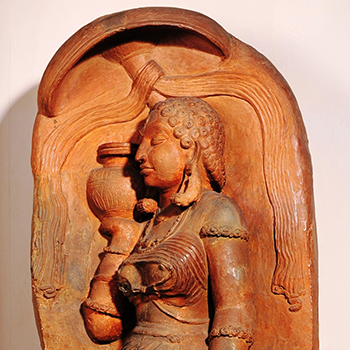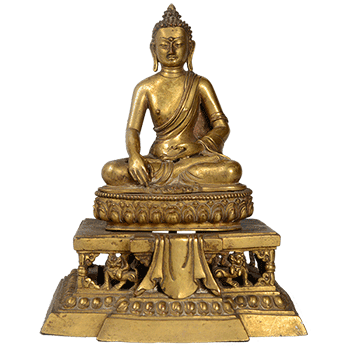This is a limestone slab showing the scenes from Buddha’s life.it was originally placed at Nagarjunakonda, Distt. Guntur in Andhra Pradesh. It belongs to the Ishkvaku dynasty which dates it to 2 CE. It is a large artefact, measuring H 179 cm W 87 cm and is currently placed in the Kushana gallery in the National Museum, New Delhi
































